Things to do in Tokyo
Sightseeing in Tokyo can bring about sensory overload if visitors aren't careful. Animated billboards, the buzz of a densely packed and highly energetic population, and glittering gleaming architecture all compete for attention, meaning there's never a dull moment.
The transport system is excellent, good value, and easy to figure out, even for Westerners. However, the best way to view the city is still on foot, taking in the multitude of sights and sounds along the way. Visitors will surely find plenty of unexpected treasures, from little temples on side streets to the warm smiling welcome of a local shop keeper.
Tokyo really does have something for everyone. Honeymooners come to cultivate romance amid the cherry blossoms; shoppers will find exactly what they're looking for and plenty on top of that; and backpackers can find ways to take in the culture without breaking the bank.
The temples and museums listed below are well worth visiting, but travellers can also lose themselves in the neon lights of Shibuya, or check out the hip Harajuku girls in Takeshita Street.
If travellers wish to experience the culture more deeply, they can take a class in any number of traditional Japanese art forms, including calligraphy, tea ceremonies, martial arts, massage, flower arranging, and meditation. Tokyo has a number of neon-lit pachinko parlours with men, women, and children trying their hand at the popular game. Japanese sports such as baseball and sumo wrestling are also fun ways to get a taste of Tokyo culture.
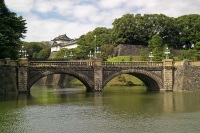
Tokyo Imperial Palace
Japan's Imperial Palace is regarded as the heart and soul of Tokyo, and stands on a huge site that still bears the remains of Edo Castle, stronghold of the Tokugawa Shogunate. The
Tokyo Imperial Palace
Japan's Imperial Palace is regarded as the heart and soul of Tokyo, and stands on a huge site that still bears the remains of Edo Castle, stronghold of the Tokugawa Shogunate. The present palace was completed in 1888 and is still home to the emperor of Japan.
The palace is off-limits but its grounds and surrounds provide a much-needed green space for the city with Higashi Gyoen, site of the Edo Castle Keep, open to the public. On January 2nd and December 23rd each year, visitors are able to enter the inner grounds and see the imperial family make public appearances from the balcony.
Guided tours of the palace are offered but only in Japanese, although an English pamphlet and audio guide are provided. These tours must be reserved in advance through the Imperial Household Agency.
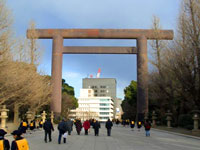
Yasukuni Shrine
To the north of the Imperial Palace lies the controversial Yasukuni Shrine, built long ago in 1869 to commemorate those two and a half million Japanese who died in war. Soldiers fo…
Yasukuni Shrine
To the north of the Imperial Palace lies the controversial Yasukuni Shrine, built long ago in 1869 to commemorate those two and a half million Japanese who died in war. Soldiers fought in the knowledge that their spirits would find rest and honour at Yasukuni in the afterlife.
The shrine is confined behind a huge steel torii (gate), opening onto a long avenue lined with gingko and cherry trees, while the Worship Hall itself is a simple Shinto-style building. North of the shrine is the Yushukan Museum, containing war memorabilia, some of which is disturbing and thought-provoking, such as the human torpedo and kamikaze suicide attack plane.
Website www.yasukuni.or.jp
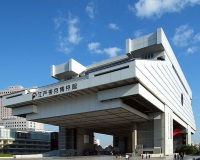
Edo-Tokyo Museum
This museum details the 400-year history of Tokyo from its beginning as a sleepy village called Edo to its time as a feudal capital, and its ultimate emergence as a modern megacity…
Edo-Tokyo Museum
This museum details the 400-year history of Tokyo from its beginning as a sleepy village called Edo to its time as a feudal capital, and its ultimate emergence as a modern megacity. Exhibits include architectural models and life-size replicas such as an ancient Kabuki theatre, original and recreated maps, photographs, woodblock prints and portrayals of the lives of the city's merchants, craftsmen and townspeople in days gone by.
There are numerous interactive exhibits and many intricate models with such wonderful detail that binoculars are provided for visitors to better appreciate them; traditional performances are held in the recreated theatre. Travellers should note that the museum will be closed for renovations until 2025.
Website www.edo-tokyo-museum.or.jp
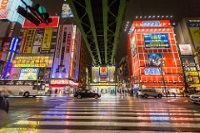
Akihabara
In a small area west of Akihabara Station lies a bright cluster of electronics shops, manga and anime stores, and video game outlets. The suburb has been specialising in electrical…
Akihabara
In a small area west of Akihabara Station lies a bright cluster of electronics shops, manga and anime stores, and video game outlets. The suburb has been specialising in electrical equipment since the 1930s and is now regarded as the world's biggest and best electrical equipment enclave. Although the cheap and impressive technology draws many visitors, this is also a paradise for gamers and anime fans, with shops full of merchandise and numerous arcades. The arcades carry everything new and novel but also have many of the vintage games that are difficult to find these days.
Website www.akiba.or.jp/english/index.html
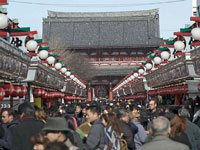
Senso-ji Temple
The Asakusa neighbourhood in Tokyo draws visitors to admire the city's oldest temple, Senso-ji, founded in 628. The story goes that two brothers fishing in the nearby river netted …
Senso-ji Temple
The Asakusa neighbourhood in Tokyo draws visitors to admire the city's oldest temple, Senso-ji, founded in 628. The story goes that two brothers fishing in the nearby river netted a golden image of Kannon, the Buddhist goddess of mercy, and the statue kept turning up in their nets no matter how many times they threw it back. The brothers were inspired to enshrine it in a temple dedicated to the deity. The statuette is still inside, but never shown to the public, though pilgrims flock here every day seeking the favour of the goddess. For many visitors, the temple is one of the highlights of a visit to Tokyo, while the nearby Demboin Garden is a good spot to relax.
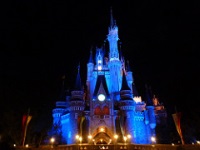
Tokyo Disney Resort
There is plenty of fun to be had at Tokyo Disney Resort, which is reminiscent of the themepark found in California. Opened in 1983, it has gradually developed a character of its ow…
Tokyo Disney Resort
There is plenty of fun to be had at Tokyo Disney Resort, which is reminiscent of the themepark found in California. Opened in 1983, it has gradually developed a character of its own and grown into one of the most popular amusement parks in the world. It offers unique attractions and an interesting fusion of American and Japanese culture, combining novel treats and old favourites among the seven different themed lands. Consisting of Disneyland Park and DisneySea Park, it's the premier attraction for kids in Tokyo.
Website www.tokyodisneyresort.co.jp
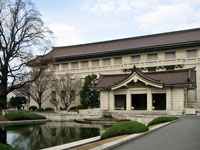
Tokyo National Museum
Close to Ueno Station and enclosed in the beautiful, spacious Ueno Imperial Gift Park, the National Museum is host to the largest collection of Japanese art in the world. Exhibits …
Tokyo National Museum
Close to Ueno Station and enclosed in the beautiful, spacious Ueno Imperial Gift Park, the National Museum is host to the largest collection of Japanese art in the world. Exhibits range from antique kimonos and delicate pottery to woodblock prints and archaeological finds.
The vast collection is displayed on a rotating basis with at least 4,000 artefacts visible at any time, so the museum always has something new to offer. The museum consists of five different buildings containing many galleries, so visitors need sufficient time to do it justice.
The Imperial Gift Park is a lovely place to enjoy a stroll, and there are shaded areas to rest. The grounds also contain big ponds and some other cultural institutions, including a zoo, the Metropolitan Art Museum, Bunka Kaikan Cultural Hall, the Western Art Museum, and the National Science Museum. There should be something here to interest the whole family and all the educational attractions can easily fill a whole day of sightseeing.
Website www.tnm.jp/?lang=en
Mount Fuji
The dormant volcano of Mount Fuji has been revered since ancient times, its symmetrical 12,388-foot (3,776m) snow-crowned summit as symbolic as the country's own flag. It features …
Mount Fuji
The dormant volcano of Mount Fuji has been revered since ancient times, its symmetrical 12,388-foot (3,776m) snow-crowned summit as symbolic as the country's own flag. It features in poetry and art through the ages and is considered a holy site in Japanese culture. The highest mountain in Japan, it has many historical and mythological associations, with ancient samurai using the base of the mountain as a remote training area. The closest town to the volcano is Fuji Yoshida, from which buses leave frequently for the most popular hiking routes. There are six trails to the summit, of which the Kawaguchiko Trail is the easiest, being quite manageable even for children and the elderly.
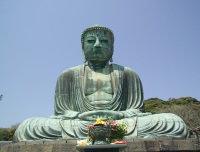
Kamakura
The city of Kamakura was the political powerhouse of Japan during the middle ages and the seat of government for most of the 13th century. Because of its historic importance, it bo…
Kamakura
The city of Kamakura was the political powerhouse of Japan during the middle ages and the seat of government for most of the 13th century. Because of its historic importance, it boasts numerous monuments, temples and shrines. As an added bonus, the city sports sandy beaches and good hiking trails in the nearby wooded hills.
One of the most important sites of interest is the Great Buddha: a bronze statue of the seated Amida Buddha located in the grounds of the Kotokuin Temple. Cast in 1252 and standing almost 44ft (13,35m) high, it's the second largest Buddha statue in Japan after that found in the Todaiji Temple in Nara.
Website www.kamakuratoday.com/e
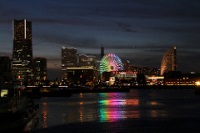
Yokohama
The main reason for visiting Yokohama is to marvel at its futuristic new city centre and perhaps take a stroll through Japan's largest Chinatown. Entered through four colourful gat…
Yokohama
The main reason for visiting Yokohama is to marvel at its futuristic new city centre and perhaps take a stroll through Japan's largest Chinatown. Entered through four colourful gates and teeming with restaurants and shops, Yokohama's Chinatown developed after the city became one of the first Japanese ports to be opened to foreign trade after isolation ended in 1859.
Chinese traders flocked to the city, establishing a cultural neighbourhood. Minato Mirai is the new central city area around the harbour, characterised by the Landmark Tower, rising to 971ft (296m). Visitors can ride to the observation deck in the world's second fastest elevator for a view that can stretch as far as Mount Fuji.
Website www.city.yokohama.lg.jp/
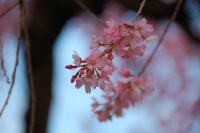
Inokashira Park
Inokashira Park is a tranquil oasis amid the bustle of Japan's capital city and is often lauded by locals and visitors as the best urban park in Japan. The park contains a temple d…
Inokashira Park
Inokashira Park is a tranquil oasis amid the bustle of Japan's capital city and is often lauded by locals and visitors as the best urban park in Japan. The park contains a temple dedicated to the goddess of love, a petting zoo and an aquarium, and is lively with musicians, artists and street performers.
One of the more popular attractions in Inokashira Park is the Ghibli Museum, which features displays on popular animated films such as Spirited Away, Princess Mononoke and Howl's Moving Castle. Possibly the best activity to enjoy in Inokashira is a drift in one of the swan-shaped paddle boats around the lake, its reflective water particularly romantic in March and April when overhanging trees are in full bloom.
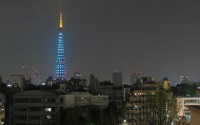
Tokyo Tower
Modelled after the Eiffel Tower, the Tokyo Tower is more colourful and serves a technological purpose. Functioning chiefly as a television and radio antenna, it's also one of the c…
Tokyo Tower
Modelled after the Eiffel Tower, the Tokyo Tower is more colourful and serves a technological purpose. Functioning chiefly as a television and radio antenna, it's also one of the city's premier landmarks and a proud symbol of Japanese culture. At 1,091 feet (332m), it's the tallest structure in Tokyo and a great vantage point from which to take in the city.
There are two observation decks in the tower, both with magnificent 360 degree panoramic views. At the base of the tower is the four-storey FootTown where visitors will find restaurants, the Guinness Book of World Records Museum, an aquarium, theme park rides and the Gallery DeLux, a display of holographic technology and imagery.
Website www.tokyotower.co.jp/en/
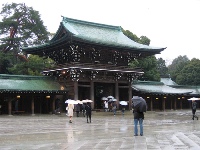
Meiji Jingu
Built in homage to the Emperor Meiji and his wife, the Empress Shoken, the Meiji Jingu monument is located in a 175 acre (70ha) evergreen forest and consists of two main areas. In …
Meiji Jingu
Built in homage to the Emperor Meiji and his wife, the Empress Shoken, the Meiji Jingu monument is located in a 175 acre (70ha) evergreen forest and consists of two main areas. In the inner Naien, there is a garden featuring shrines and a treasure museum holding articles belonging to the Emperor and Empress.
In the outer cloister, the Gaien, the Meiji Memorial Picture Gallery presents murals depicting significant events during the Meiji rule. Today, traditional Shinto weddings are held in the hall and newcomers to Japan are always intrigued when witnessing the unique Shinto wedding procession. The lush grounds are wonderful to explore, providing sanctuary from the busy city at any time of day.
Website www.meijijingu.or.jp/english/
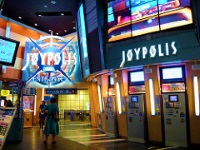
Tokyo Joypolis
Kids will be kept busy for hours on end at Tokyo Joypolis, one of the world's most famous theme parks. Apart from all the rides and games, there are several shops and a wide select…
Tokyo Joypolis
Kids will be kept busy for hours on end at Tokyo Joypolis, one of the world's most famous theme parks. Apart from all the rides and games, there are several shops and a wide selection of restaurants to choose from. The park provides hours of entertainment for the whole family and is a wonderful attraction for a rainy day. The queues can get frustratingly long though, so it's best to go during the week, either early in the morning or in the evening.
Website tokyo-joypolis.com



